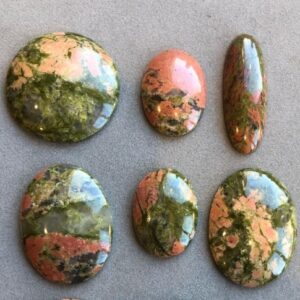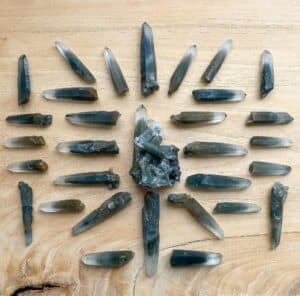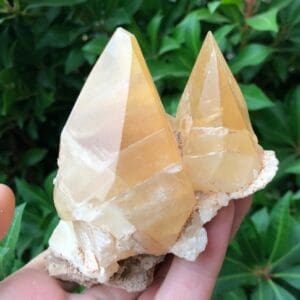Rockhound Locations In North Carolina
Here at the Rockhounding Maps, we give you access and information to the best dig sites for crystals and minerals in North Carolina. On top of that, we’ve created a resource page to assist with answering all of your gem and mineral collecting questions.
We hope you enjoy your time on our site and come back often because we’re always adding new dig locations and crystal collecting updates. This is a great resource for anyone who loves rockhounding, from beginners to experts alike!
Rockhounding in North Carolina is a great way to discover the state’s diverse geology and fossilized wildlife. The number of potential collecting sites here makes it an excellent location for those interested not only in rocks, but also minerals that can be found within them!
We are here for any questions or concerns that might arise about your adventures in mineral collecting.
North Carolina Rockhound Locations
North Carolina should be at the top of your list when looking for sapphires, rubies, garnets, beryl, and amethyst. The western part of the state has hundreds of locations to dig for crystals, agates, gemstones, and petrified wood.
I grew up in Georgia and took day trips to North Carolina to dig for sapphires in Chunky Gal and Gastonia. Without a doubt, I would come back with some amazing sapphire crystals and materials suited for cabochons.
The many streams, tributaries, and waterways are excellent sources of semi-precious stones which means you’ll need to bring your own screening box.
North Carolina Crystal Map
| Location Name | Longitude and Latitude | Rocks and Gemstones |
|---|---|---|
| Nebo area | 35.705704, -81.948538 | Quartz crystals |
| Woodlawn area | 35.795177, -82.041858 | Quartz crystals |
| Sink Hole Mine | 35.975675, -82.176598 | Beryl, Apatite, Garnet, Kyanite |
| Roan Mountain | 36.101345, -82.109614 | Unakite, Epidote |
| Spruce Pine | 35.919323, -81.999391 | Actinolite crystals |
| Wiseman’s View | 35.903479, -81.905032 | Quartz crystals |
| Cowee Creek | 35.272075, -83.393613 | Garnet, Ruby, Sapphire, Beryl, Kyanite, Rutile |
| Sheep Knob Mountain | 35.278596, -83.373637 | Aquamarine |
| Highlands area gravels | 35.048187, -83.210795 | Corundum, Almandine Garnet |
| Little Scaly Mountain | 35.032040, -83.254768 | Corundum, Rutile crystals, Serpentine |
| Otto area | 35.066763, -83.387664 | Amethyst, Garnet, Quartz crystals |
| Mason Mountain | 35.246996, -83.361692 | Corundum, Garnet, Quartz crystals |
| Lemon Gap | 35.792875, -82.950550 | Allanite |
| Roaring Fork Creek | 35.816856, -82.934029 | Unakite |
| McDowell County | 35.681830, -82.071539 | Pyrope Garnet |
As a brief overview, this is the history of North Carolina’s geological past:
- Precambrian Era: Much of North Carolina was covered in the ocean, which was deeper then. The sedimentary rock deposited at this time has shifted to primarily metamorphic rocks. Experts say large deposits of pre-coral fossils ( Pteridinium carolinaense) were found throughout the center of the State
- Cambrian Period: This era consisted of heavy tectonic shifts. The collision of land masses and volcanic activity bombarded the region. This left heavy deposits of igneous, metamorphic, and sedimentary rocks. However, much like the Precambrian era, the sedimentary rocks have shifted to metamorphic rock due to the high heat and pressures over time.
- Ordovician Period: This was the era where most experts suspect the Appalachian mountains were formed.
- Carboniferous Period: This era is the last period associated with the building of the Appalachian mountains.
- Triassic Period: In this era, the supercontinent Pangea split, and the Atlantic Ocean was officially formed. North Carolina experienced a very wet era where coal and oil formed thanks to the immense biodiversity in the region.
- Tertiary Period: As the Atlantic continued to expand, the North Carolina coastline formed more fully.
- Quaternary Period: This era consisted of massive glacier melting and receding across the landscape. This left behind massive sand deposits, which helped enhance the rich supply of metamorphic rock.
North Carolina Gemstone Map
| Location Name | Longitude and Latitude | Rocks and Gemstones |
|---|---|---|
| Stoney Creek gravels and area mines | 35.525347, -81.986739 | Garnet |
| Marlin Knob | 35.508202, -81.841316 | Garnet, Unakite |
| North Toe River | 35.953328, -82.197364 | Kyanite, Corundum |
| Burnsville | 35.888319, -82.274744 | Amazonite, Apatite, Aquamarine, Beryl, Emerald, Fluorite, Garnet, Kyanite, Muscovite, Feldspar, Rutile crystals |
| Celo Ridge mining dumps | 35.863973, -82.225348 | Sapphire, Feldspar, Garnet, Kyanite |
| Crabtree Emerald Mine | 35.874321, -82.120482 | Apatite, Emerald |
| Deer Park Mine | 35.933035, -82.104996 | Feldspar crystals, Garnet, Thulite |
| Bear Creek area | 35.955017, -82.107113 | Kyanite |
| Spear area mines | 35.982224, -82.000698 | Beryl, Garnet, Epidote |
| Bryson City | 35.443603, -83.440162 | Garnet, Magnetite, Moonstone, Pyrite, Feldspar, Kyanite, Staurolite |
| Pink Beds Picnic area | 35.351862, -82.775880 | Smoky quartz crystals |
| Looking Glass Falls | 35.296274, -82.768248 | Garnet |
| Rosman area | 35.183889, -82.824063 | Dogtooth calcite |
If you’re looking for the best rockhound locations in North Carolina, you’re in the right place!
The Western region of North Carolina is the most popular spot for rockhounds because there are several mines and public spaces for collecting.
Some precious stones you might find in this region include:

Most of the crystals and minerals are found in the Western part of the state and some of the best spots are privately owned. You’ll have to pay to dig at some of these locations but it’s worth it. You’ll find some great specimens, be outside, meet other rock hounds, and have an amazing weekend.
North Carolina Agate Map
| Location Name | Longitude and Latitude | Rocks and Gemstones |
|---|---|---|
| Lake Summit, western shore | 35.222029, -82.429956 | Agate |
| Mitchell County | 36.055454, -82.13497 | Agate |
| Casar area | 35.511971, -81.653133 | Agate, Rutilated Quartz |
| Unaka area | 35.183948, -84.154065 | Staurolite, Agate, Epidote, Pink Feldspar, Petrified wood, Smoky Quartz |
| Caldwell area | 35.465529, -80.826959 | Agate, Carnelian, Chalcedony |
| Chapel Hill area | 35.924770, -79.045276 | Moss Agate, Petrified wood |
| Hillsborough area | 36.071284, -79.131398 | Moss Agate, Quartz crystals |
| Mooresville area | 35.620981, -80.953004 | Agate, Amethyst, Quartz crystals |
| Statesville area | 35.729163, -80.881507 | Agate, Amethyst, Quartz crystals |
| Butner area | 36.127005, -78.824508 | Agate, Amethyst, Jasper |
| Creedmore area | 36.207496, -78.657102 | Agate, Jasper, Chalcedony |
| Eno River | 36.071903, -78.857587 | Agatized wood |
| Pee Dee River | 35.107074, -80.056344 | Agatized wood, Chalcedony, Jasper |
| Concord | 35.361901, -80.627915 | Agate, Carnelian, Chalcedony |
Is it Legal to Dig for Rocks in North Carolina?
It is legal to dig for rocks in North Carolina, with a few exceptions. You cannot dig or pan for rocks and minerals on public parklands. Additionally, you need to ask for permission before digging or prospecting on private property.
Can You Collect Rocks From the Beach in North Carolina?
This is a little bit of a grey area. Generally speaking, carrying a few sea shells and pebbles from the beach is okay. However, beaches are usually public or private lands and forbid large-scale collection of rocks, minerals, and fossils.

Rock and Mineral Societies
Catawba Valley Gem and Mineral Club
The Catawba Valley Gem and Mineral Club gather every second Tuesday of the month at St. Aloysius Church. They host several rock-hunting excursions to local mines and rock quarries.
These trips are hosted several times a month and make for a great group to explore the local region. You can join their group for $18 per year or $25 per year for a family membership!
Forsyth Gem Club hosts their meetings every third Thursday of the month. They’re a group of amateurs, semi-professionals, and geologists!
They host several events between September and December for jewelers and rock lovers. You can join their club to accompany them on their field trips throughout the local area.
Southern Appalachian Mineral Society
The Southern Appalachian Mineral Society prides itself as an educational enthusiast group. They’re a group of rock and mineral lovers who wish to educate the public on everything geological.
But their primary focus is the field of mineralogical. While they don’t have many field trips in the winter, thanks to the cold weather, they still hold their gatherings and some events. It’s a great idea to get a membership!
Henderson County Gem & Mineral Society
The Henderson County Gem and Mineral Society is a group of rock and mineral enthusiasts. They host public dig events where you can feel free to join even if you’re not a member.
But if you want to join all of their field trips and rock exhibitions, you should get a membership!
The Tar Heel Gem and Mineral Club aim to educate everyone about mineralogy and paleontology. You can join their club for $20 per year and participate in their field trips and educational seminars.
Be sure to check out their field trip guidelines and by-laws!

